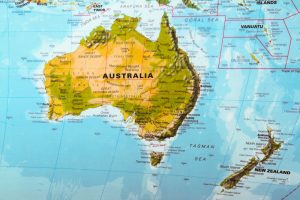Australia is currently in pre-election mode. An election has yet to be announced, but as it legally has to be held by May next year the campaigning is already unofficially underway. One of the more intriguing features of the current political landscape is a loose collection of independent candidates – with climate change as a prominent focus – who are specifically targeting a number of seats held by the Liberal Party.
The movement, a grassroots strategy model rather than a shared platform, has gained enough public traction to elicit a certain panic within the Liberal Party, particularly from those MPs whose seats are being targeted. If the public were to electorally respond to the smell of fear, then the Liberal Party is doing itself no favors by giving off an awful funk.
While recent commentary has likened this movement to a simple “anti-government” trend that has no chance of wielding any power (save for in a hung parliament), this fundamentally misunderstands what is taking place. Yet in order to provide some greater clarity, we need to take a trip into the historical and philosophical weeds.
The Liberal Party is a creature of the conditions of the 20th century that, despite governing Australia for the past nine years, is struggling to adapt to the unique conditions of the 21st century. As was common during the 20th century when faced with a strong political party tied to the trade union movement – like the Australian Labor Party – liberal and conservative forces tended to find a common cause.
The Labor Party formed the world’s first social-democratic national government in 1904, albeit for only four months, yet the party’s strength was decades ahead of its counterpart in the United Kingdom. In response, the early decades of the Australian federation saw an array of different political parties that ran in opposition to Labor. These parties were able to form governments, but had such internal turbulence that they lacked longevity. Only with the creation of the Liberal Party in 1944 did the amalgamation of these non-Labor forces find political stability.
This stability was aided by the unique post-World War II conditions as the Cold War provided liberalism and conservatism a more widescreen geostrategic unifying bond, with conservatism embracing free markets and committing itself to liberal democracy in response to the rise of communism. Yet since the collapse of the Soviet Union this common cause has weakened and the inherent instability of the alliance has again resurfaced.
In recent decades the pace of technological and social change – and especially the threat of climate change – further ripped at the Liberal Party’s seams. While John Howard was able to keep the party united until his defeat by Labor in 2007, since then the party has been in a constant state of unrest. Most prominently the party has been unable to psychologically come to terms with the realities of climate change.
The battle between Tony Abbott and Malcolm Turnbull to wrestle control of the party was the practical demonstration of the party’s philosophical tensions, and as well as its struggle to form a necessary modern and coherent energy policy. International pressure from the ideological whirlwind of former U.S. President Donald Trump has added further stress to the party’s stability.
With Turnbull now spat out of the party, and as a result the party’s liberal wing diminished, a new space has opened up in Australian politics. However, there are huge obstacles for new parties to be able to gain traction in the House of Representatives, where government is formed (the Senate, with a different voting system, is a lot easier). So rather than creating a national or even state-wide movement, the strategy of this loose collection of independents has simply been to target electorates that, due to their demographics, would be open to voting for an independent MP.
Although the model for these independent movements was first established in the rural Victorian seat of Indi at the 2013 election, the current targeted seats are those with considerable wealth and education, with a heavy focus on Melbourne’s inner-east and Sydney’s harborside. These are voters who cannot bring themselves to vote for the Labor Party due to persistent class divisions, but who can no longer acquiesce to the behavior of the Liberal Party as it has descended into know-nothingism. These are naturally liberal seats that have now become politically trapped by the lack of a distinct party option for their worldview.
These are also voters who are aware that having an independent MP in a potentially hung parliament buys them considerable power. Furthermore, it would create what they would see as a necessary existential crisis within the Liberal Party if it loses its wealthiest supporters and most prized electorates. Such a crisis may finally split the party’s uneasy ideological coalition.
These movements may have laudable goals in trying to push the government into more serious action on climate change, and they also may be planting the seeds of a new political vehicle more capable of negotiating the unique conditions of the 21st century. However, it should not be overlooked that within these wealthy electorates these movements are also being driven by elites who are finding a new tool to maintain their power within the country. If the Liberal Party will no longer work for them they will find someone else who will.
































